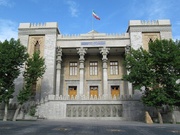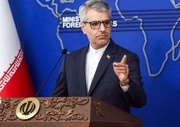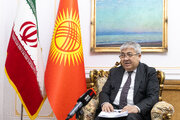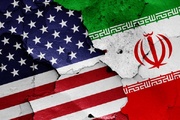Actually, it is an agreement between UAE and Saudi mercenary forces. It is so favorable for Riyadh that Saudi Arabia’s Crown Prince Mohammad bin Salman hailed the deal as a new chapter in Yemen’s history and a step toward ending the war in the country.
Interestingly, Saudi Arabia's Foreign Minister Adel al-Jubeir said that the deal indicates that Saudi Arabia is trying to establish peace in Yemen. United States President Donald Trump also welcomed the deal and described it as “a very good start” for Yemen.
There are a few points to be made about the deal: first, many social media users and experts believe that the deal is, in fact, a Yemeni version of the Balfour Declaration which led to the creation of Israel in Palestine. Riyadh intends to occupy Yemen through the deal.
Second, the deal was basically brokered between the Saudi and UAE forces while the Yemeni representatives and Houthis were not involved, so it cannot be an agreement between south and north Yemen. The Houthi movement responded to the deal, saying that it is a useless agreement that cannot be implemented and has nothing to do with the Yemeni nation.
Third, the deal seeks to share power between Saudi and UAE forces in the country’s southern provinces. Therefore, Saudi Arabia and the UAE will indirectly exercise power in these areas.
The deal was boasted so important that bin Salman and Abu Dhabi Crown Prince Mohammed bin Zayed al-Nahyan were present during its signing process in Riyadh. The deal calls for the formation of a new cabinet of no more than 24 ministers within 30 days that would have equal representation for northerners and southerners. The Saudi-led coalition has practically taken the control of Yemen by this deal.
Fourth, by launching a media propaganda campaign, the Saudi officials are trying to improve their reputation through this deal. By exaggerating the deal, the officials attempt to describe it as their historic achievement to end the Yemeni war. But, the point is that the Saudi-led coalition and the UAE are the main culprits for the war in Yemen.
Earlier, there have been intense clashes between mercenaries affiliated with the UAE and Saudi Arabia in Aden and southern Yemeni cities, with many experts calling it a sign of domestic disputes between these two countries. Saudi Arabia, which found out these clashes would hurt the aggressors, made great efforts in recent weeks to broker a ceasefire agreement between the mercenaries on both sides.
UAE forces have ceded the control of important areas of Aden to Saudi-backed mercenaries in recent weeks. Now, based on the deal, Saudi Arabia will take control of Hadramout, which reveals Riyadh’s effort to occupy Yemen.
Fifth, the deal emphasized the necessity of unity among all parties under the watch of the Saudi-led coalition to confront the Houthi movement. This move goes against national goals in Yemen. Riyadh had found that Yemen’s Houthis intended to launch a military operation against the aggressors, so it united mercenaries of the two countries in the fight against the Houthi movement.
In fact, Saudi Arabia does not want clashes between Saudi and UAE mercenaries to provide any opportunity for Houthis, therefor it resorts to any ploy to counter the Houthis.
If Riyadh really sought to strike an accord between the Yemenis, first it should have not mentioned the Saudi-led coalition in the deal; secondly, it should have engaged Houthi forces, which are an important part of Yemen’s political system and cannot be overlooked in the country’s political structure.
The Riyadh deal is actually an agreement between Saudi Arabia and the UAE to share power in southern Yemen, not an agreement between Yemeni forces to manage the country.
If the Yemenis want to put an end to the crisis created by the Saudi-led coalition, they must reach a comprehensive agreement, with the participation of all groups, away from foreign interventions. The Yemenis should establish an integrated government and take different parts of the country back from the invaders.
MNA/TT

























Your Comment